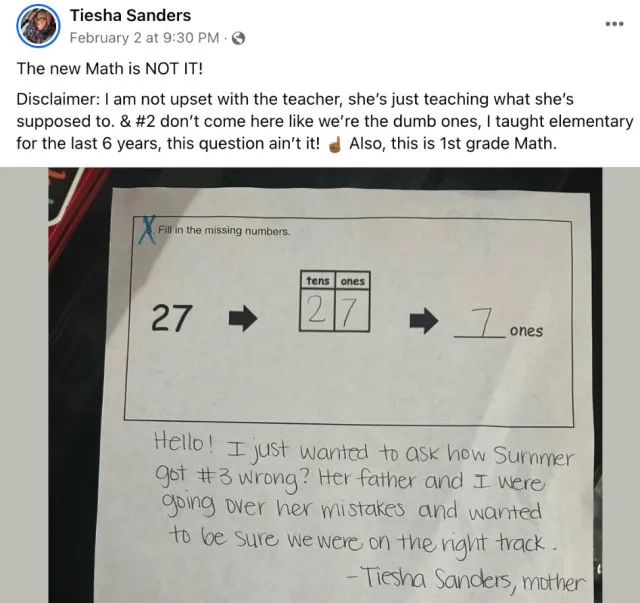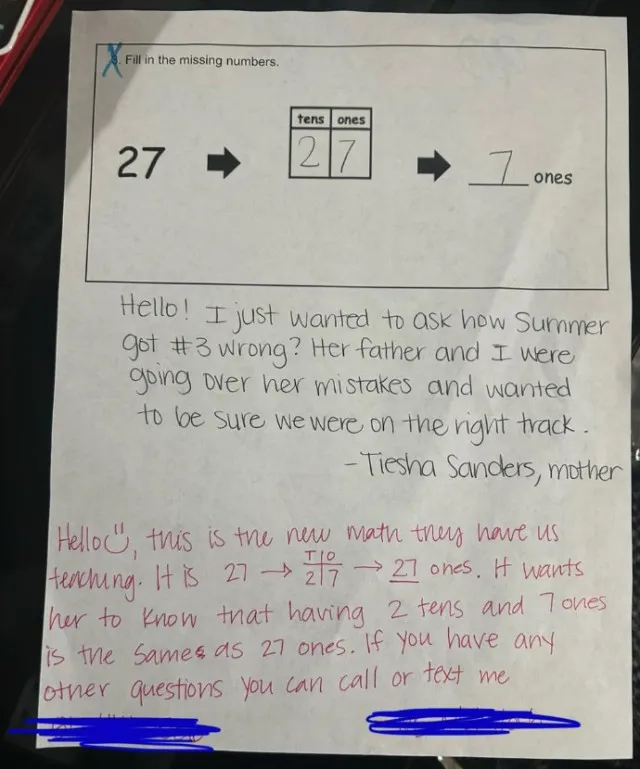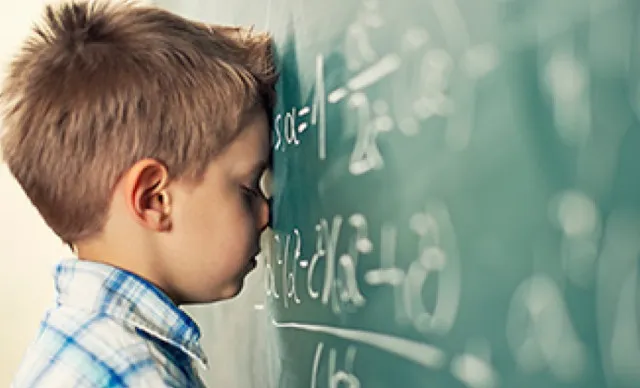A seemingly simple math problem given to a first-grader in Texas has baffled parents and sparked debate online. The incident highlights confusion over “new math” teaching methods.
The math problem that stumped parents
Tiesha Sanders, a Texas mother, shared a photo of her daughter’s year-one math homework on Facebook.
The task asked students to “fill in the missing numbers.” Her daughter, Summer, filled the “ones” column in the table with the number seven.
When asked how many “ones” there were, Summer assumed the answer was seven, just as she had written before.
To her surprise, this response was marked incorrect.

Confusion over the correct answer
Puzzled by the result, Tiesha reached out to Summer’s teacher for clarification.
In her message, she asked, “How did Summer get #3 wrong? Her father and I were going over her mistakes and wanted to be sure we were on the right track.”
The teacher responded, explaining, “This is the new math they have us teaching.”

She clarified by saying, “It wants her to know that having two tens and seven ones is the same as 27 ones.”
The teacher also included a diagram to illustrate the correct answer.
Parents’ reactions: ‘Set up to fail’
Tiesha’s confusion resonated with many. She shared the incident on social media, expressing her frustration.
“This new math is NOT it,” she wrote, reflecting on her six years of experience as a primary school teacher.

Her post garnered over 3,700 comments, with many echoing her concerns.
One commenter exclaimed, “The hell??????” while another added, “This is goofy.”
Others felt the question was misleading, stating, “The question sets them up to fail.”

Critics pointed out the flawed design of the problem.
“If they have the box that labels ‘tens’ and ‘ones’ then only ask for the ‘ones,’ how is this math, matching?” questioned one person.
Another suggested that the arrows in the diagram should have been equal signs, to better illustrate that all components were the same.
One person said: If there were = signs instead of arrows it would be okay … But otherwise directions are not clear.
A second wrote: What if I just want 3 fives, a ten, and 2 ones? Better yet, make that 1 one and change of a dollar.
While a third commented: I agree with the commenter who said it’s the structure of the question that’s wrong.
It should not be arrows, it should be equal signs. 27 = 2 tens 7 ones = 27 ones. The arrows make it confusing.
Another added: Individualism! Numbers have rights! DEI!!! Don’t lump them together or categorize them……
Someone else said: Cause 2 tens is 20 ones… it makes 2 ten blocks. 7 cant make a complete block so its left over.
So its 2 tens whuch is 20 1s and 7 1s therefore 27 ones…..dont see the problem here.

The confusion around Summer’s math problem has sparked a broader discussion on modern teaching methods.
Tiesha’s experience reflects a common issue parents face with “new math” approaches.
As debates continue, it’s clear that clearer instructions and examples could help bridge the gap between traditional and new learning methods.
For now, many parents are left wondering if these changes are beneficial, or if they only make simple math more complicated.